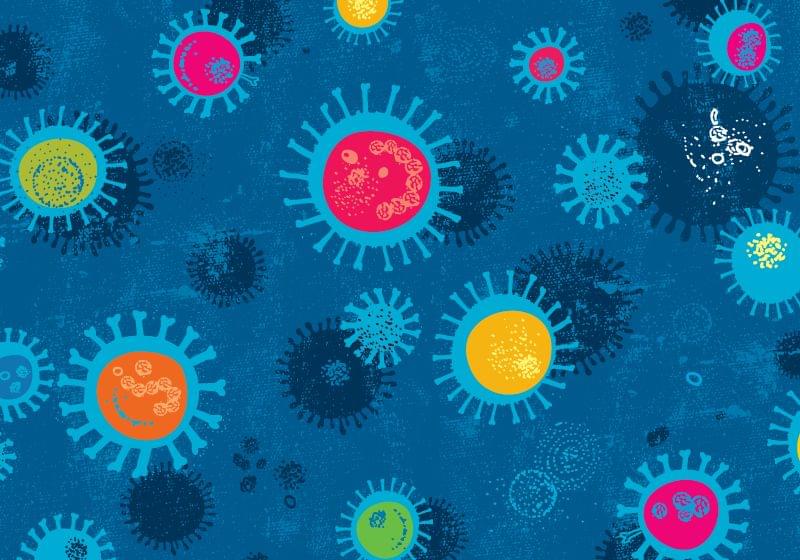Aug 23, 2024
Frontiers: Brain organoids have become increasingly used systems allowing 3D-modeling of human brain development, evolution, and disease
Posted by Dan Breeden in categories: biotech/medical, evolution, genetics, neuroscience
To be able to make full use of these modeling systems, researchers have developed a growing toolkit of genetic modification techniques. These techniques can be applied to mature brain organoids or to the preceding embryoid bodies (EBs) and founding cells. This review will describe techniques used for transient and stable genetic modification of brain organoids and discuss their current use and respective advantages and disadvantages. Transient approaches include adeno-associated virus (AAV) and electroporation-based techniques, whereas stable genetic modification approaches make use of lentivirus (including viral stamping), transposon and CRISPR/Cas9 systems. Finally, an outlook as to likely future developments and applications regarding genetic modifications of brain organoids will be presented.
The development of brain organoids (Kadoshima et al., 2013; Lancaster et al., 2013) has opened up new ways to study brain development and evolution as well as neurodevelopmental disorders. Brain organoids are multicellular 3D structures that mimic certain aspects of the cytoarchitecture and cell-type composition of certain brain regions over a particular developmental time window (Heide et al., 2018). These structures are generated by differentiation of induced pluripotent stem cells (iPSCs) or embryonic stem cells (ESCs) into embryoid bodies followed by, or combined, with neural induction (Kadoshima et al., 2013; Lancaster et al., 2013). In principle, two different classes of brain organoid protocols can be distinguished, namely: (i) the self-patterning protocols which produce whole-brain organoids; and (ii) the pre-patterning protocols which produce brain region-specific organoids (Heide et al., 2018).






 Bacteria defend themselves from viral infection using diverse immune systems, many of which sense and target foreign nucleic acids. Defense-associated reverse transcriptase (DRT) systems provide an intriguing counterpoint to this immune strategy by instead leveraging DNA synthesis, but the identities and functions of their DNA products remain largely unknown. Here we show that DRT2 systems execute an unprecedented immunity mechanism that involves de novo gene synthesis via rolling-circle reverse transcription of a non-coding RNA (ncRNA). Unbiased profiling of RT-associated RNA and DNA ligands in DRT2-expressing cells revealed that reverse transcription generates concatenated cDNA repeats through programmed template jumping on the ncRNA. The presence of phage then triggers second-strand cDNA synthesis, leading to the production of long double-stranded DNA. Remarkably, this DNA product is efficiently transcribed, generating messenger RNAs that encode a stop codon-less, never-ending ORF (neo) whose translation causes potent growth arrest. Phylogenetic analyses and screening of diverse DRT2 homologs further revealed broad conservation of rolling-circle reverse transcription and Neo protein function. Our work highlights an elegant expansion of genome coding potential through RNA-templated gene creation, and challenges conventional paradigms of genetic information encoded along the one-dimensional axis of genomic DNA.
Bacteria defend themselves from viral infection using diverse immune systems, many of which sense and target foreign nucleic acids. Defense-associated reverse transcriptase (DRT) systems provide an intriguing counterpoint to this immune strategy by instead leveraging DNA synthesis, but the identities and functions of their DNA products remain largely unknown. Here we show that DRT2 systems execute an unprecedented immunity mechanism that involves de novo gene synthesis via rolling-circle reverse transcription of a non-coding RNA (ncRNA). Unbiased profiling of RT-associated RNA and DNA ligands in DRT2-expressing cells revealed that reverse transcription generates concatenated cDNA repeats through programmed template jumping on the ncRNA. The presence of phage then triggers second-strand cDNA synthesis, leading to the production of long double-stranded DNA. Remarkably, this DNA product is efficiently transcribed, generating messenger RNAs that encode a stop codon-less, never-ending ORF (neo) whose translation causes potent growth arrest. Phylogenetic analyses and screening of diverse DRT2 homologs further revealed broad conservation of rolling-circle reverse transcription and Neo protein function. Our work highlights an elegant expansion of genome coding potential through RNA-templated gene creation, and challenges conventional paradigms of genetic information encoded along the one-dimensional axis of genomic DNA.










